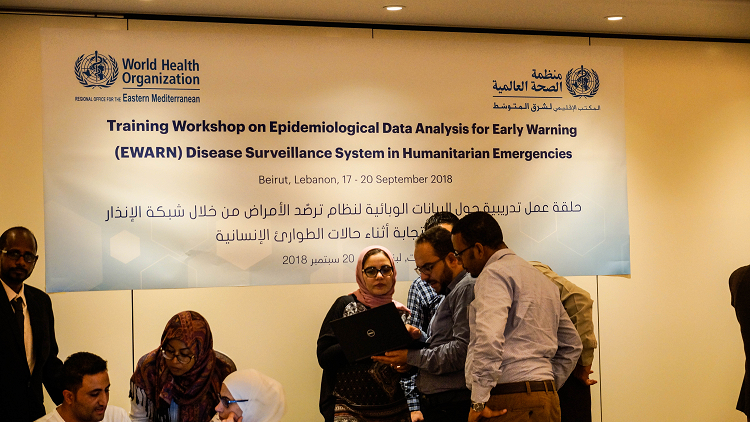 Workshop participants discuss group work on EWARN performance benchmarks (Photo: WHO)
Workshop participants discuss group work on EWARN performance benchmarks (Photo: WHO)
27 September 2018 - From 17 to 20 September, 30 health professionals from 7 countries met in Beirut, Lebanon, to discuss and improve data collection, analysis and reporting for Early Warning Alert and Response Network (EWARN) in humanitarian emergencies. EWARN, an early warning surveillance system for humanitarian emergencies, has played a critical role in countries like Somalia and Yemen, by improving early detection and effective monitoring of cholera and diphtheria outbreaks. Each of the 7 represented countries in the workshop has implemented the EWARN system in humanitarian crisis affected settings.
During the workshop, participants reviewed findings of the recently concluded landscape analysis of EWARN systems in the region and identified minimum best practice and standards that should be adopted as “benchmarks” for the EWARN systems performance. Participants also reviewed and agreed on the contents of weekly EWARN epidemiological bulletins.
Finally, a key workshop objective was the introduction of the Epidemiological Analysis Handbook for EWARN. Participants received training on how to use the Handbook, which was recently developed by the Infectious Hazard Management (IHM) unit at WHO’s regional office for the Eastern Mediterranean (EMRO), to improve the quality of EWARN data analysis, interpretation and reporting in the Region.
Dr Mamunur Malik, Manager of the IHM unit at EMRO, said: “Implementing EWARN and ensuring that it can detect outbreaks on time, remains one of the primary responsibilities of WHO in public health emergencies. The new epidemiological data analysis manual will help to get high quality, up-to-date epidemiological information into the hands of decision makers and public health actors. With solid data at their fingertips, they will be in a much better position to guide epidemic prevention and control efforts for emergency-affected populations.”








